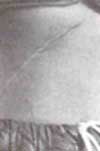Gelling in a cure
 Beauty conscious people now need not lose sleep over scars. Wounds from injury or an operation. more often than not leave behind ugly reminders in the form of scars. Now, A stitch in time researcher Mark Ferguson at the University of Manchester UK, offers hope in the form of a toothpaste-like gel which, if smeared on the wound, prevents it from forming a scar, reports New Scientist, Vol 147, No 1996.
Beauty conscious people now need not lose sleep over scars. Wounds from injury or an operation. more often than not leave behind ugly reminders in the form of scars. Now, A stitch in time researcher Mark Ferguson at the University of Manchester UK, offers hope in the form of a toothpaste-like gel which, if smeared on the wound, prevents it from forming a scar, reports New Scientist, Vol 147, No 1996.
Building on the fact that foetus wounds heal without a scar, Ferguson studied the biochemistry of adult wounds, where he found that adults produce wound healing compounds - also called transforming growth factors beta-1 and beta-2, in excess of what is required.
The growth factors bind together in a single molecule called "latency associated peptide" or LAP. The sugars present on the surface of LAP bind to the fibroblast cells forming the fibrous protein collagen or scar tissue at the site of the wound. The size of the scar is directly propotional to the amount of collagen released.
The solution to the problem lay in somehow inhibiting coliagen forma- tion. Ferguson found that a sugar FM sent on the surface of the LAP - m nose-6-phosphate - when admig tered alone could prevent collagen A mation. This sugar blocks the recepow sites of LAP by eliminating them totally.
To study the effectiv, M gel, trials were conducted on pigs sheep. Ferguson even tested the ;W19 himself by making two identical cutsa his arm and then applied the gel on wound leaving the other to heal on own. -The treated wound is not A pletely invisible, but it is much, m less noticiable than the untreated 0ne he admitted.
Volunteers am awaiting trials via it will help the Manchester scientist figure out the correct dose. Hi A tious,plans include people who have undergone minor operations and WA to study the effectiveness of the gel on more serious cases and bum victims.
